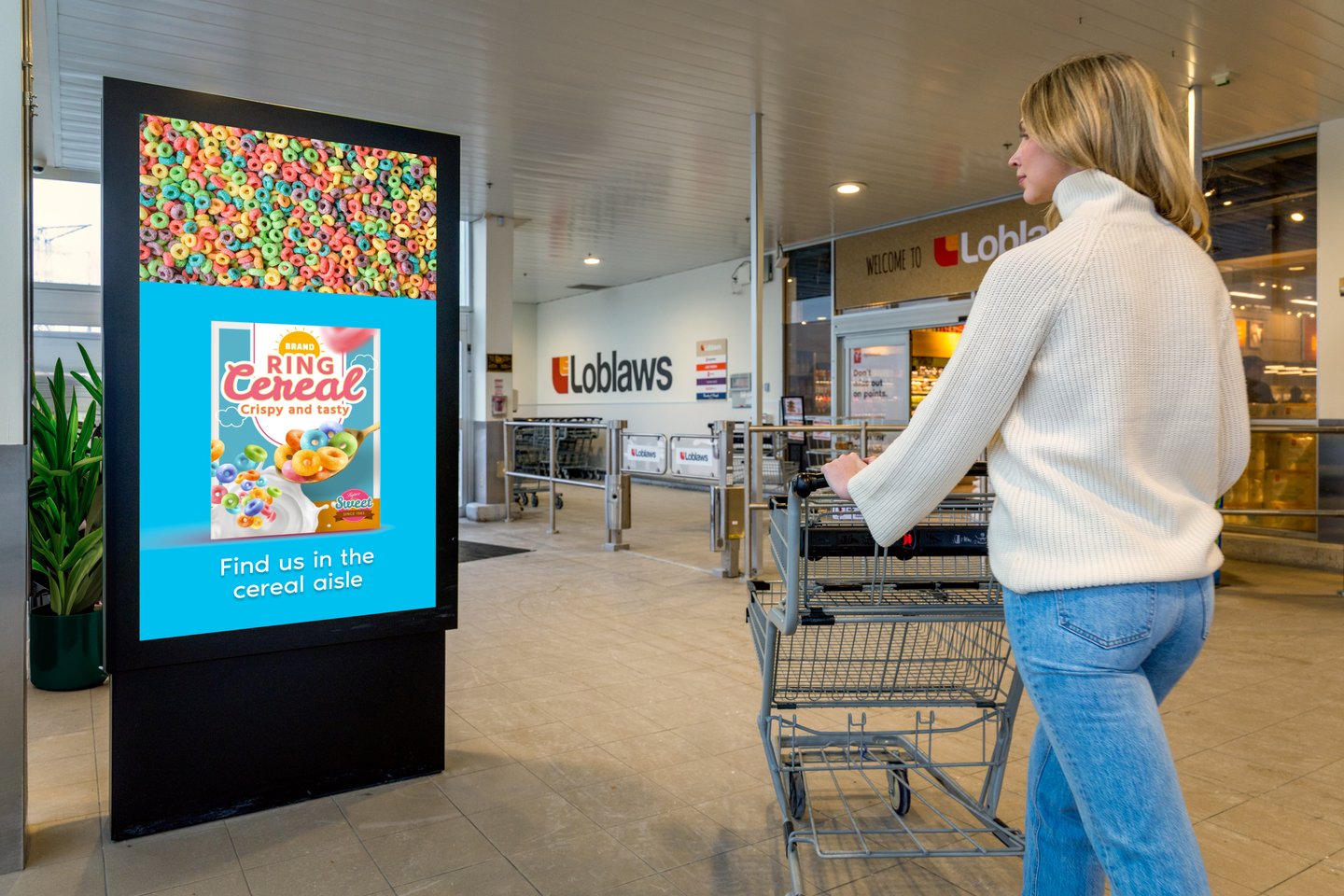Keys to Winning With In-Store Retail Media
The retail store is no stranger to digital signage or advertising. TV screens, PA systems and other messaging outlets have been around for decades. Yet, today’s marketers are breaking new ground with their sustained attempts to leverage these capabilities not simply as part of their merchandising or trade promotion strategy, but as a media channel unto itself.
The emergence of in-store retail media — the name loosely given to a collection of digital tools and technologies that allow advertisers to deliver targeted, personalized messages in a variety of formats across the store — is in some ways a logical response to the explosive growth of retail media networks.
“It is an extension of media, specifically in how it’s being attributed in-store and also how it’s being measured and targeted to consumers,” says Jeffrey Bustos, vice president of measurement addressability at the Interactive Advertising Bureau (IAB). “In-store retail media is a balance of what you can do in-store from your merchant relationship and tie that to online digital ad campaigns to bring that omnichannel experience.”
There is no question that the gap between spending on on-site formats and in-store audience reach presents a huge opportunity for both brands and retailers. Consider:
The vast majority — 81.5% — of retail media ad spend will go toward on-site formats in 2024, according to forecasts from eMarketer. And yet in-store audiences are, on average, 84% greater than digital audiences, according to an analysis of 2023 data from Placer.ai and Comscore, per eMarketer.
But while many capabilities under the in-store media umbrella are complementary to retailer advertising platforms, there are hurdles to clear before brands can deliver the kind of precision marketing and conversion rates that they’ve come to expect from online.
A Higher Bar to Clear
Industry experts advise marketers to take a holistic approach to all forms of retail media while accounting for the complexities of the physical store. “The challenges on the in-store side are much different,” says Chris Riegel, CEO of Stratacache, a retail media solutions provider based in Dayton, Ohio. “For online or mobile, we can do a cloud-hosted service, slap on a Google server, and in two weeks with $10,000 worth of services you have a retail media exchange. In-store, the physical structure and merchant categories are much more complex, and the technologies are extremely capital intensive.”
As with any digital technology, there is also a greater burden placed on a brand’s ability to conduct tracking and measurement ROI. “As in-store inventory moves from traditional to digital, we believe brands will have increased scrutiny of in-store media investments,” says Kyley Rouse, commercial product manager for Kroger Precision Marketing at 84.51°. “As we build for the future, we want to remove the complexity to transact in this space.”
“The fundamental distinction between digital signage and in-store media is that the latter must follow the rules of transparency, measurability and accountability that any other media or ad product in the universe adheres to,” says Jeremy Vianna, vice president and general manager of audience and ad products for Advance powered by Loblaw, the retail media arm of the Canadian retail chain with more than 2,400 stores concentrated in the grocery, beauty and pharmacy categories.
Right time, right place: A holiday 2023 campaign at Loblaws featuring a popular confectionary brand (not shown here) employed a combination of offsite media, in-store screens that sent shoppers to the cereal aisle, and audio to achieve a 3.6 times increase in customer growth, as well as double-digit increases in message recall and purchase intent.
A Program Checklist
Despite these challenges, brands are increasingly drawn to in-store retail media as a way to engage shoppers and capture incremental increases in both brand/category consideration and basket size. When designed and executed well, experts say, these programs can help mitigate some of the ongoing margin pressures at retail.
“In this inflationary environment, we keep hearing, ‘Fuel costs are killing me, labor costs are killing me, shrink is killing me’,” says Riegel. “Folks like McKinsey are telling everyone to look at retail media because you can make up for some of the profit losses there. Even among the consultant class, it is understood that this is an exciting new way to monetize the store.”
Based on advice from the above experts, here is a checklist for brands as they delve further into activation in the in-store retail media space:
1. A deep understanding of the audience supported by loyalty data. “We’re already leveraging our data science to help brands and agencies optimize audiences to deliver on business goals for other retail media,” notes KPM’s Rouse. “With our retail media signals, in-store advertising becomes more localized to the specific store and more relevant to those shoppers.”
2. A clearly defined set of campaign goals aligned to business outcomes. “We’re always thinking about how to optimize our media platforms in ways that are specific to our clients’ needs and help achieve the desired business outcomes, whether it’s to drive repeat purchases or increase basket size,” says Vianna.
3. Creative that enhances (not interrupts) the shopper journey. “We are coming to the table with the mindset that it’s critical to maintain deep trust with our shoppers,” says Rouse. “We’re focused on making each in-store touchpoint or screen solve a customer pain point.”
4. An effective closed-loop measurement strategy. Digital platforms can provide a more verifiable ad exposure, but marketers still have to fill in the gaps of attribution, campaign effectiveness and ROI. “Retailers will always ask first and foremost: Did you help move more products off the shelf,” says Vianna. “Our job is not just to say here’s your cost-per-click or the number of impressions you got, but fundamentally we’re obligated to deliver results and incremental ROAS.”




